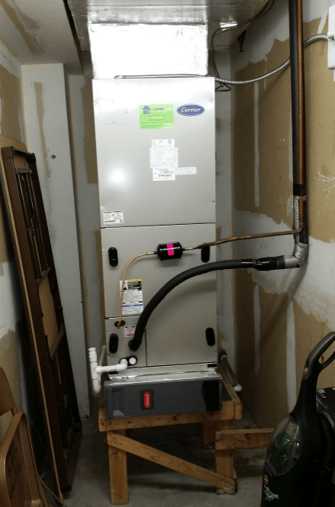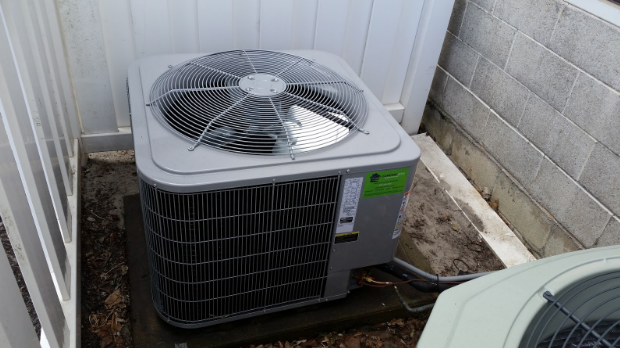Problem: The 20-year-old 3-Phase York 8-SEER heat pump had failed in an Ocean City duplex. As a result, the system switched to emergency heat, drastically increasing utility bills.
Solution: Replace the old heat pump with a new Carrier Infinity Series 16-SEER Coastal Heat Pump system with increased efficiency and additional protections from corrosion, important to extend the life of systems in coastal communities.






 Heat pump systems are an energy-efficient alternative to furnaces or air conditioners. They have a reputation for working well in mild climates by pulling in air from the outside and either warming or cooling it to reach the temperature you want inside the house. When it’s just way too cold for the air to warm, or something’s gone wrong, the emergency heat kicks on. Newer systems also have improved ”inverter” technology which enables them to work just as well in even colder weather, down to 17F degrees or below, before relying on any backup emergency heating, making them a great solution for places like our New Jersey shore communities.
Heat pump systems are an energy-efficient alternative to furnaces or air conditioners. They have a reputation for working well in mild climates by pulling in air from the outside and either warming or cooling it to reach the temperature you want inside the house. When it’s just way too cold for the air to warm, or something’s gone wrong, the emergency heat kicks on. Newer systems also have improved ”inverter” technology which enables them to work just as well in even colder weather, down to 17F degrees or below, before relying on any backup emergency heating, making them a great solution for places like our New Jersey shore communities.

 The new Coastal series heat pump system also helps get those utility bills down below where they were, even when the old heat pump was working properly. It has a two-stage blower fan, as opposed to the one-stage fan we replaced. With a dual-stage system, the pump can either work at full blast or use less energy when the weather is cooler and the air doesn’t require as much treatment. Additionally, by using inverter technology, the heat pump will work well even at temperatures well below freezing, meaning less, if any, use of emergency heat. With improved overall heating and cooling ability and improved efficiency, our owner of this great coastal duplex will have comfort no matter what the season, and the unit will have a longer lifespan due to its additional corrosion protections, which is critical at the Shore.
The new Coastal series heat pump system also helps get those utility bills down below where they were, even when the old heat pump was working properly. It has a two-stage blower fan, as opposed to the one-stage fan we replaced. With a dual-stage system, the pump can either work at full blast or use less energy when the weather is cooler and the air doesn’t require as much treatment. Additionally, by using inverter technology, the heat pump will work well even at temperatures well below freezing, meaning less, if any, use of emergency heat. With improved overall heating and cooling ability and improved efficiency, our owner of this great coastal duplex will have comfort no matter what the season, and the unit will have a longer lifespan due to its additional corrosion protections, which is critical at the Shore.



